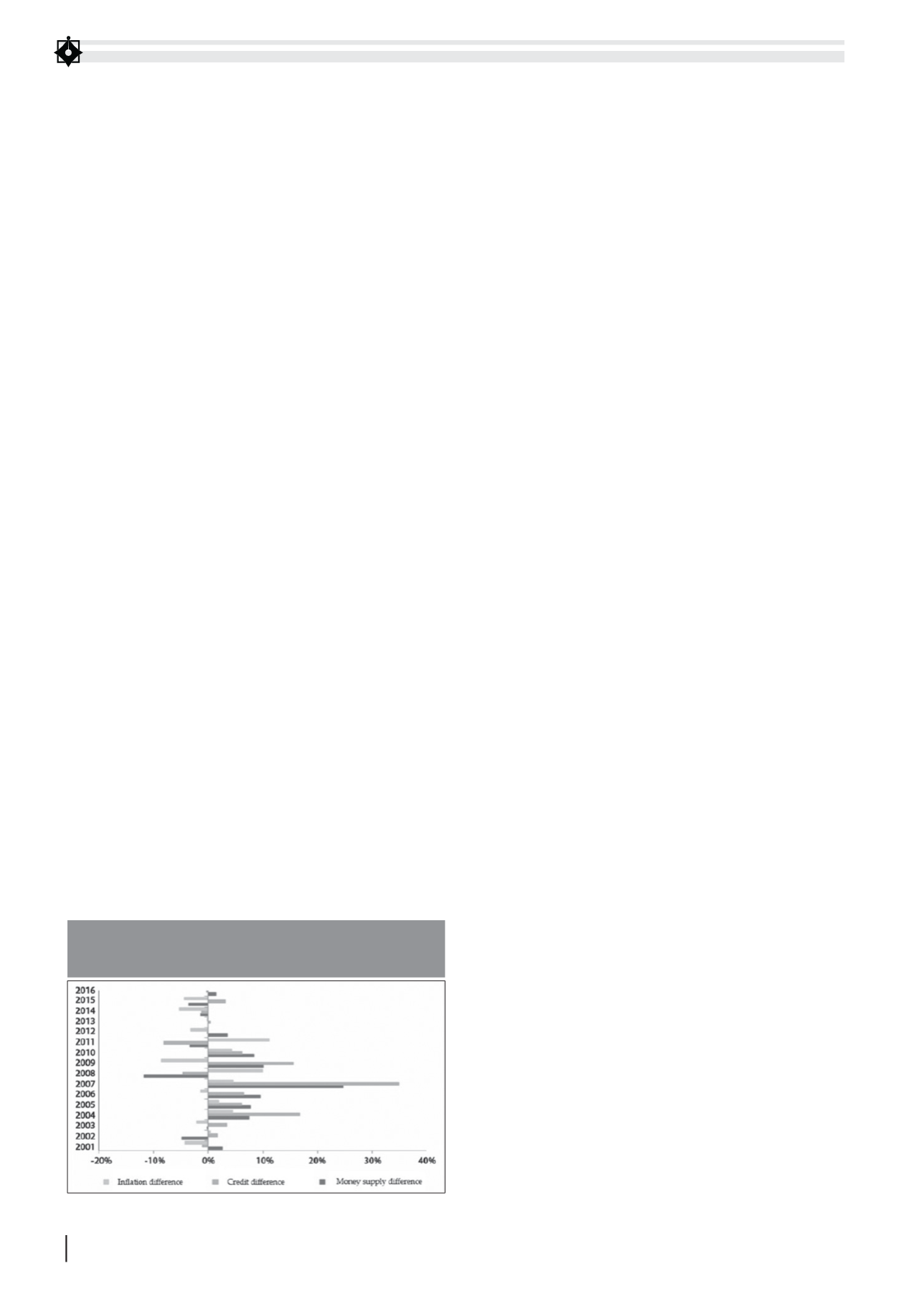
36
priority sectors, the flexible management of OMO
and refinancing, the assignability of credit growth
target, the flexible management of exchange rate
and the closely market happenings follow-up.
For the discount and refinance interest rates
and OMO management, SBV has adjusted
executive rates consistently with current situation
and forecasts of macro-economic and money
market situation. In Directive No. 01/CT-NHNN
dated 10 Jan 2017 about the implementation of
monetary policy and the guarantee of safe and
effective banking operation in 2017, SBV oriented
that “managing interest rates in line with macro-
economic happenings, inflation and money
market in order to stabilize interest rate ground;
on the basis of the ability to control inflation
and stabilize foreign currency market, trying
to reduce lending interest rates”. Accordingly,
to reduce operating cost for enterprises, which
contributed to promote economic growth under
the Government’s undertaking and on the basis of
the careful evaluation inflation happenings which
tending to increase slowly and in control capacity,
on 10 Jan 2017, SBV decided to lower the executive
interest rates by 0.25%/year, the maximum short-
term lending interest rate for priority sectors
by 0.5%/year, at the same time, SBV directed
credit institutions to continue implementing
synchronously saving cost measures, improving
operation effectiveness in order to facilitate a
decrease in lending interest rate.
By the end of 2017, lending interest rate ground
for the priority sectors was: from 6.0% to 6.5 for
short-term, 8.0% to 10.0% for mid and long-term;
6.8 to 9.0% for short-term regular production
and business and 9.3% to 11% for the mid and
long-term production and business. Outstanding
credit concentrated on production and business,
in particular, to the Government’s priority sectors.
By the end of Oct.2017, loan outstanding balance
for agriculture and rural development increased
about 19%, accounting for 21% the total loan
outstanding balance of the economy; credit for
export sector increased 8.14% (as of August.2017);
credit for high-tech enterprises increased 25.12%;
credit for prioritized developing industrial sector
increased 18.9%; credit for small and medium
enterprises (SMEs) increased 7.49%, accounting
for 20.89% of the total of economy’s loan
orient target (16-18%). Beside the economy’s
low demand factor, money and credit supply
growth from 2012 to now did not created
pressure increasing inflation likes in the previous
period. This result came from SBV’s well control
the amount of money supply not only in 2017 but
also in each period of this year, while credit was
allocated to the economy’s key production sectors.
Therefore, money no longer was the main factor
which put pressure on the increase of Consumer
Price Index (CPI) (mainly as the result of the price
adjustment of many essential commodities for
consumption).
About operation objectives, SBV controlled
tightly the amount of base money through open
market operation (OMO) and refinancing. SBV
selected base money as performance indicator in
order to linkmonetary policy tools to intermediate
target. From 2011 to now, the relationship
between base money growth and money supply
growth has been relatively stable in comparison
to the previous period. This came from the
stability of the amount of base money happenings
through careful management, flexible OMO and
refinancing.
Following closely macro-economic happenings
and towards the implementation of monetary
policy objectives, SBV operated actively monetary
policy tools in order to stabilize money market,
ensure credit organization’s liquidity ability,
good control intermediate target. Following the
success of 2016, the tools system that SBV used
in 2017 included: discount, and refinance interest
rates and OMO management, the regulation
of lending and borrowing interest rate cap for
FIGURE 1: THE DIFFERENCE BETWEEN PLAN
AND IMPLEMENTATION OF INFLATION, CREDIT
AND MONEY SUPPLY (%)
Source: General Statistic Office the State Bank


